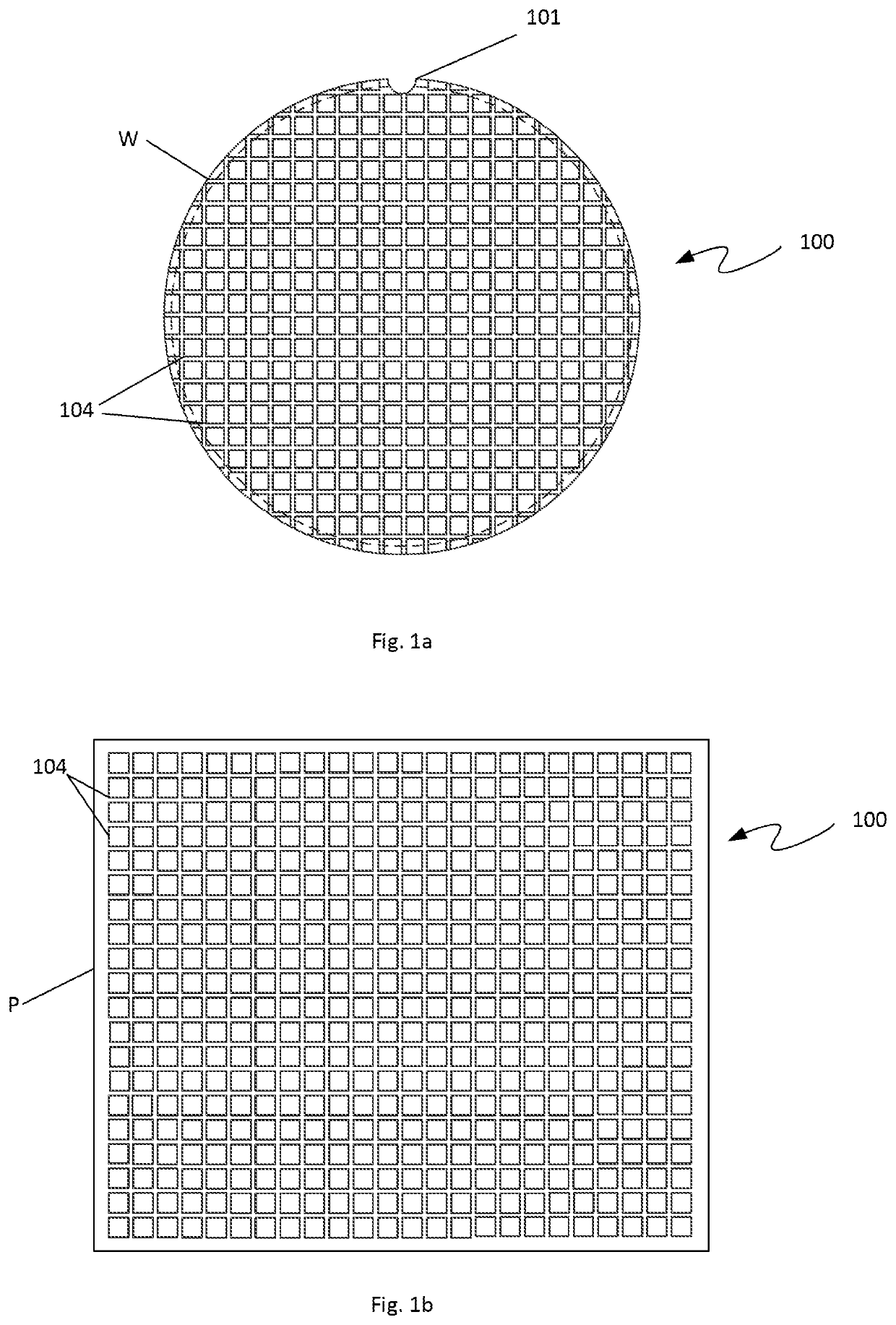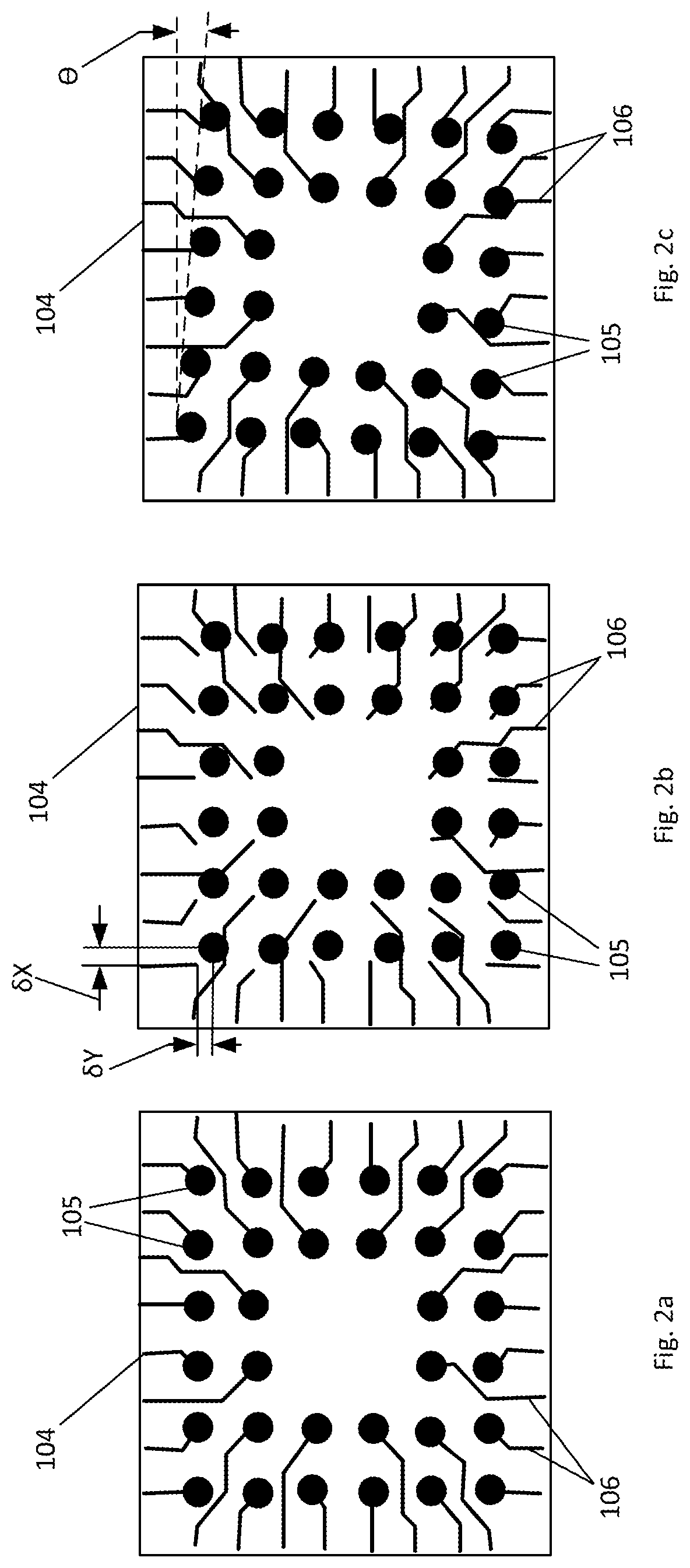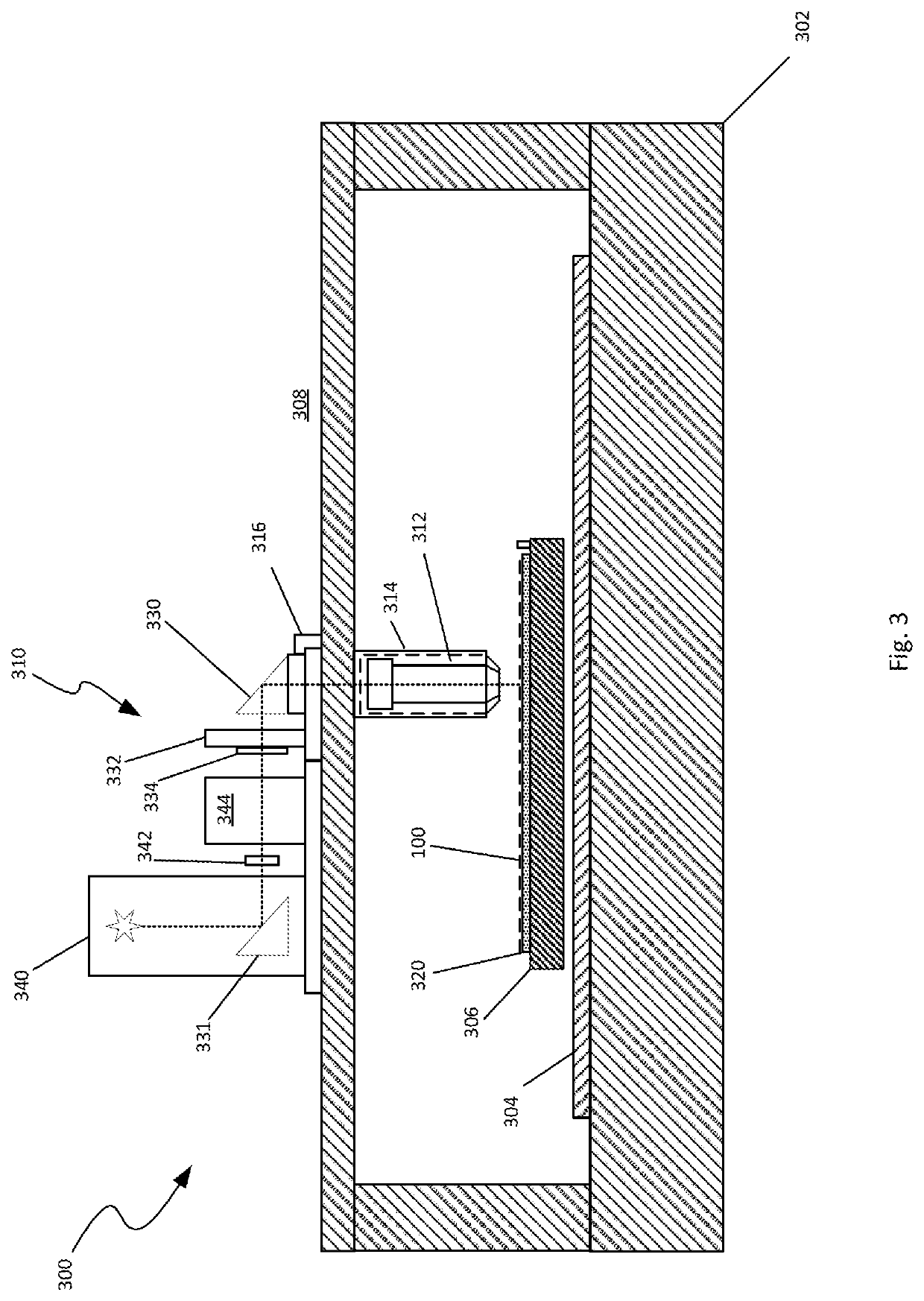System and method for optimizing a lithography exposure process
a lithography exposure and optimization technology, applied in the field of semiconductor devices, can solve the problems of reducing system throughput, misalignment errors, and possible misalignment in lithographic processes, and achieve the effects of improving the quality of integrated circuit devices, reducing misalignment, and good quality alignmen
- Summary
- Abstract
- Description
- Claims
- Application Information
AI Technical Summary
Benefits of technology
Problems solved by technology
Method used
Image
Examples
Embodiment Construction
[0045]Lithographic processing to create semiconductor or other electronic devices is carried out on many different types of substrates 100. One of the most common is a semiconductor wafer W such as that shown in FIG. 1a. Wafer W is generally a flat discoid object of varying diameter. The wafer W generally includes an orientation structure 101 such as the illustrated notch. Marks, flats and other structures may be substituted for a notch. Wafers W are generally formed of a semiconductor material such as silicon, gallium arsenide, and the like, though in some instances glass or composite materials such as epoxy are used. These wafers W are commonly found in 200 mm or 300 mm diameters, but larger and smaller wafers W are common.
[0046]FIG. 1b illustrates a generic panel P of a type commonly addressed using lithographic processes. As with wafers W, panels P may be formed of semiconductor materials or of glass or composite materials. Panels P are generally rectangular or square in shape. ...
PUM
| Property | Measurement | Unit |
|---|---|---|
| diameters | aaaaa | aaaaa |
| diameters | aaaaa | aaaaa |
| power | aaaaa | aaaaa |
Abstract
Description
Claims
Application Information
 Login to View More
Login to View More - R&D
- Intellectual Property
- Life Sciences
- Materials
- Tech Scout
- Unparalleled Data Quality
- Higher Quality Content
- 60% Fewer Hallucinations
Browse by: Latest US Patents, China's latest patents, Technical Efficacy Thesaurus, Application Domain, Technology Topic, Popular Technical Reports.
© 2025 PatSnap. All rights reserved.Legal|Privacy policy|Modern Slavery Act Transparency Statement|Sitemap|About US| Contact US: help@patsnap.com



